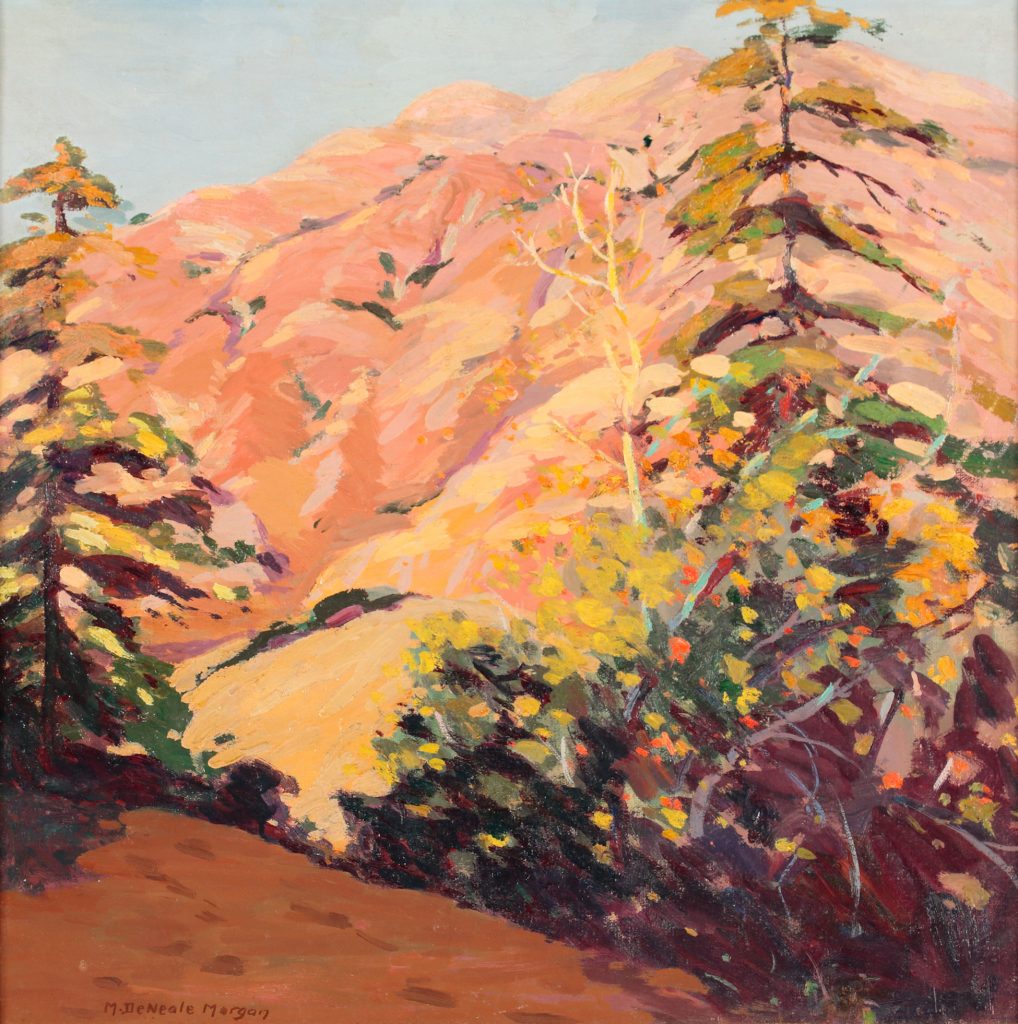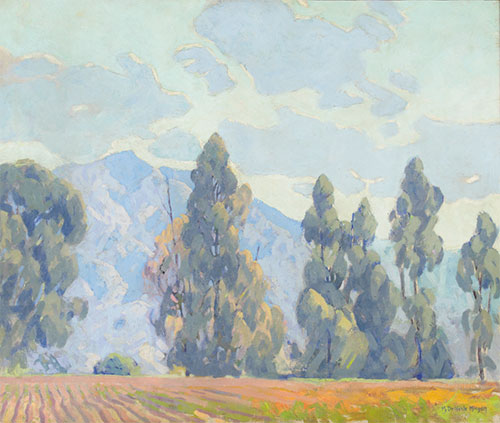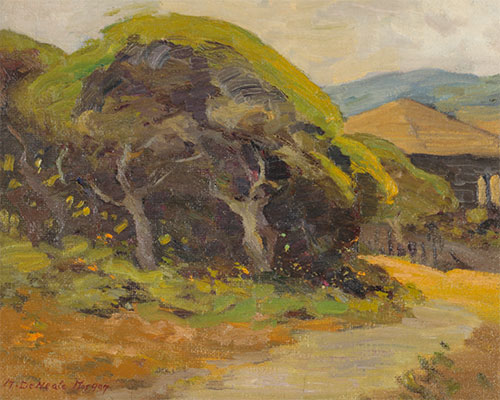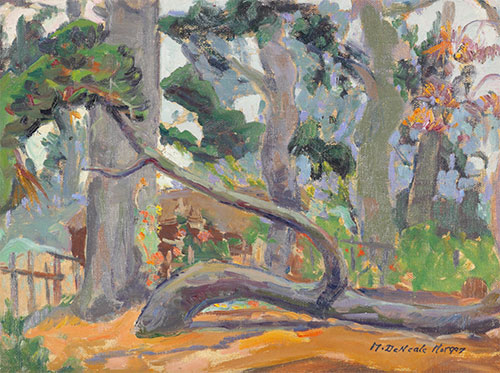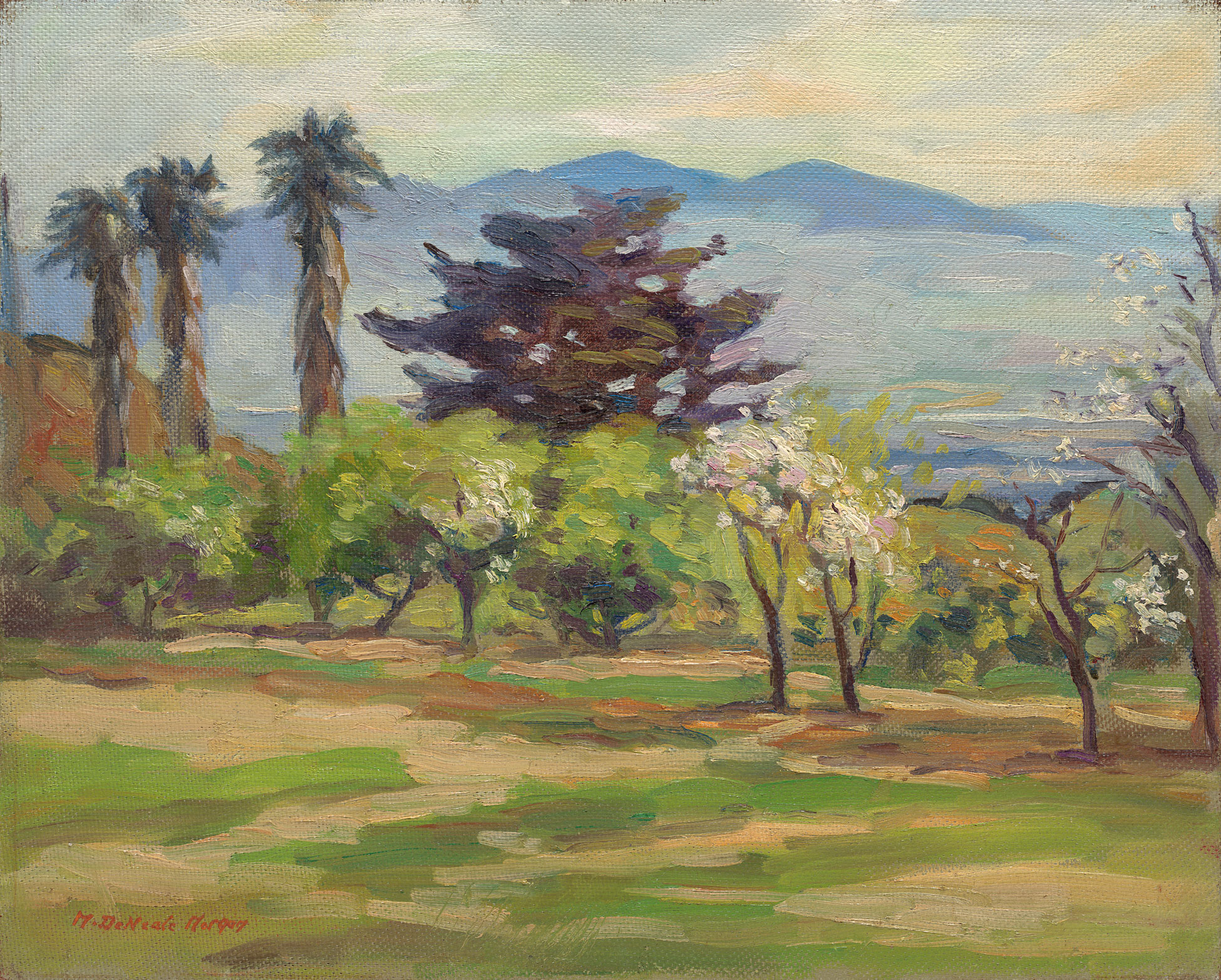M. DeNeale Morgan, as she signed her work, was one of Carmel’s distinguished plein air painters–a generous spirit who worked tirelessly for various Carmel civic groups. Her mother’s family emigrated from Scotland to the Monterey area in 1856, homesteading a ranch near Point Piňos and then in the Salinas Valley. It was partly because of her family’s stories about the beauty of the Monterey Peninsula that DeNeale Morgan came here to live and work.
Born in San Francisco in 1868, she was taken to Oakland in 1872, where the painter and teacher William Keith was her first teacher. She was precocious. In 1886 she enrolled in the California School of Design in San Francisco and studied with Emil Carlsen and Amédée Joullin until 1890. She paid her first visit to Carmel in 1903. In 1910 she returned to buy the studio and home of the late Sydney Yard, located next to what is now the Cypress Inn on Lincoln. From then on through the 1940’s, her studio was filled with tourists, buyers, other artists and friends. The building, ever expanding with new rooms and more paintings, became a meeting place for civic activists.
Her style was her own, sometimes containing elements of the Barbizon School, sometimes tonalist or California impressionist, but always distinctly her own, usually in vivid color with broad, bold strokes, sometimes laid on with a palette knife. When pressed to say what school of painting she belonged to, she replied that she was a “horse and buggy artist.” She refused to be typed. Her favorite subject was the Monterey cypresses. When asked if she didn’t tire of that subject, she replied that she “would stick by her cypress trees till they sink into the sea, or–what is just as tragic and final–be hopelessly built-around.”
In 1915, she won a Silver Medal at the Panama-Pacific International Exposition in San Francisco; in 1928 she was selected by Scribner’s Magazine as one of the nation’s foremost women artists. She rarely travelled outside Carmel, never outside the U.S., but had one-woman shows in San Francisco, New York, Washington, D.C. and Chicago.
A community activist, she was a member of the Save the Dunes Committee, which met in her studio to oppose a developer’s plan for a big tourist hotel at the foot of Ocean Avenue. Morgan, Fred Bechdolt and Talbert Josselyn were selected from the group of forty to approach Frank Devendorf about buying the property. “Devy” agreed to sell the 15 acres to the city for the grossly undervalued price of $15,000. The voters agreed to spend the money and the developer was stymied.
DeNeale Morgan was also an original member of the Forest Theater, for which she designed sets. Wearing her distinctive purple cloak, she was active with the Carmel Arts and Crafts Club, the forerunner of the Carmel Art Association. During World War I, she was the director of the Carmel Summer School of Art, an offshoot of the Art and Crafts Club. It was she who invited William Merritt Chase, distinguished New York artist and teacher, to teach at the Summer School, greatly increasing Carmel’s reputation as an art center, both here and on the East Coast. She was a founding member of the Carmel Art Association and of All Saints’ Church, where she attended communion services every morning at 8 o’clock. During World War II, service men who were stranded in Carmel on Saturday nights could always find a bed in her studio and breakfast the next morning. Every Thursday afternoon she cut out portrait silhouettes–upwards of four hundred–for patients at the Fort Ord Hospital.
She always painted on location so that she could capture the light, color and mood of her subject. DeNeale Morgan died on Oct. 10, 1948, at the age of 80. Four days before, she was at Point Lobos painting a cypress. After her death, the unfinished canvas was hung in her studio. Brother Cornelius, William Keith’s biographer, wrote in Morgan’s copy of his book: “To Miss DeNeale Morgan, master painter of the strange form, color and texture, the weather beaten toughness, the ancient fantastic weirdness, in a word, of the truth of our beloved Monterey cypresses …”
Source:
website: carmelresidents.org
Source: www.askart.com

